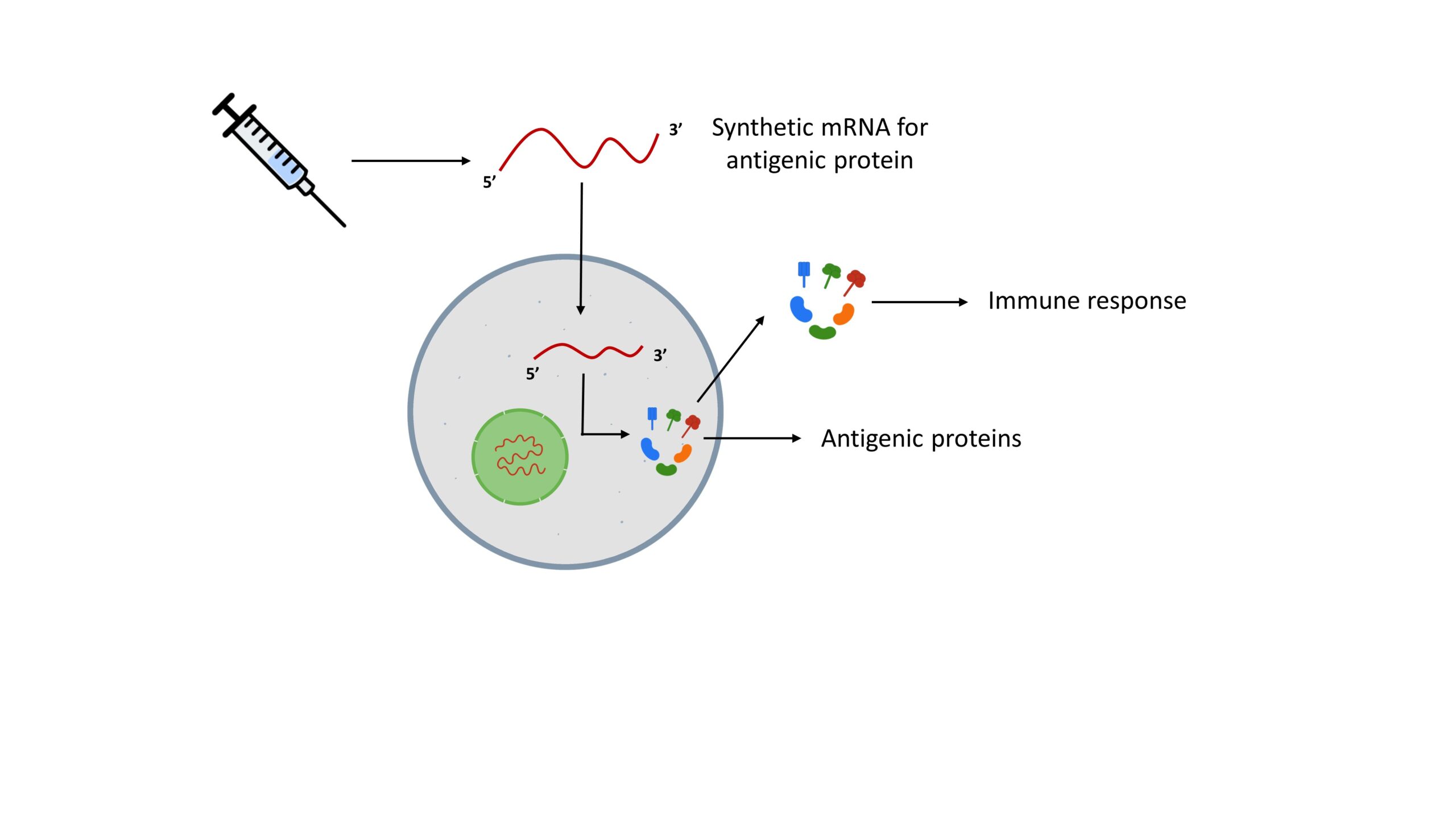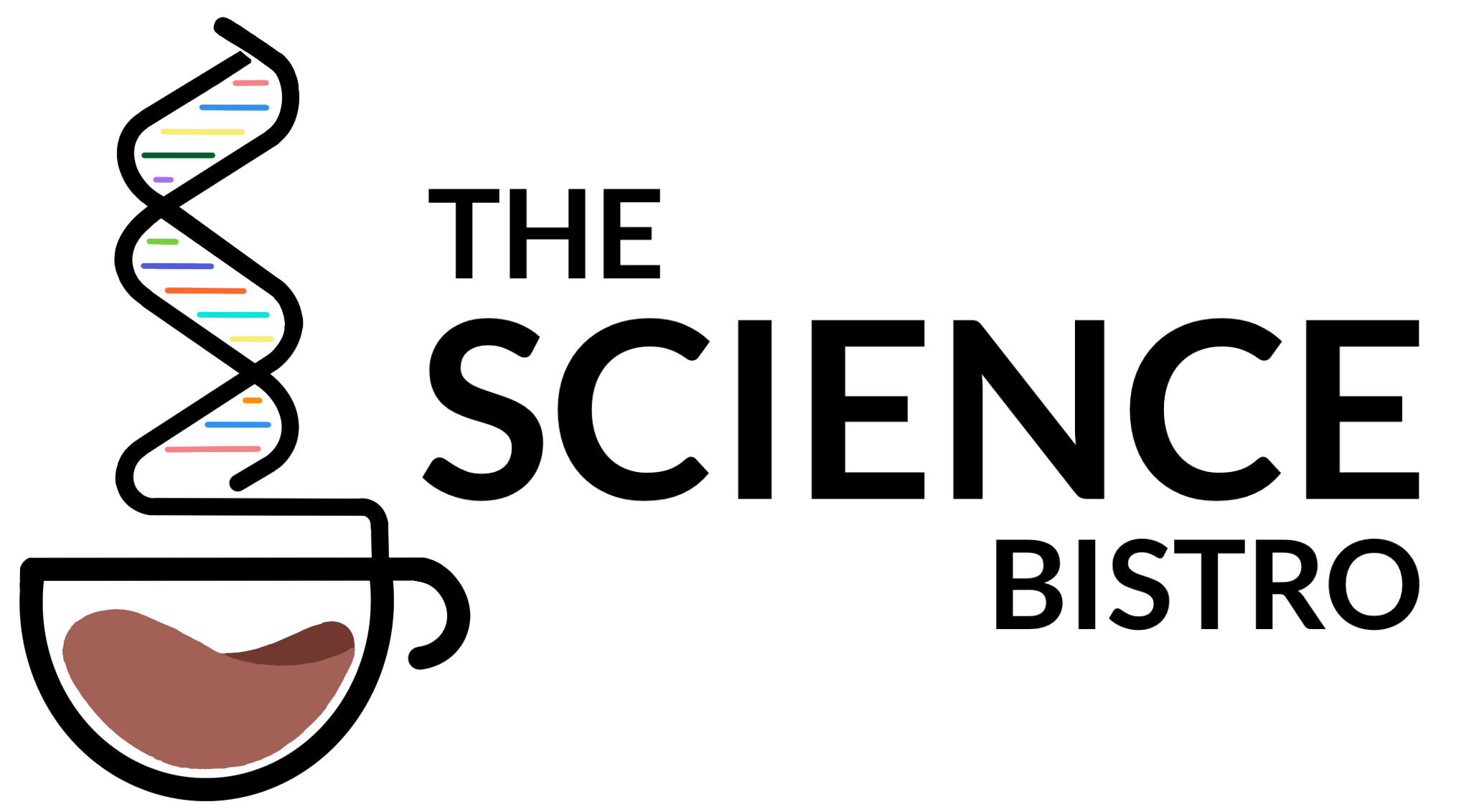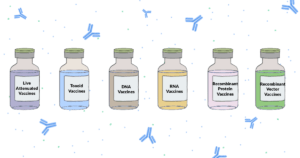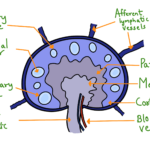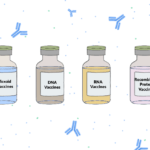In the previous article post, we discussed the general idea behind vaccines. This article is more focused on different types of vaccines. From the discovery of vaccines up to recent times, a lot of research has been done on vaccines against different diseases, giving rise to a variety of different vaccine types. As we discussed earlier, the essential part for a vaccine to work is the generation of antibodies by recognizing the specific antigen. Based on the source of antigen in a vaccine, the vaccines are divided into different categories. We will have a look at all these categories one by one in detail.

Whole organism vaccines:
These vaccines include whole organisms such as a bacterium or a virus as a source of antigen. These whole organisms can be either inactivated (Killed) or live but attenuated, i.e. capable of transient growth in host organisms.
Live attenuated vaccines:
As the name suggests, these vaccines include live pathogens (virus or a bacterium), which are attenuated. The process of attenuation results in loss of pathogenicity (ability to cause disease), but the organisms retain their immunogenicity (ability to induce an immune response in a host). The attenuation process is achieved by growing the pathogen for extended periods under abnormal culture conditions. These organisms are live; hence, they can grow inside the host, but the growth is transient. The slow growth provides antigens over a prolonged period against which antibodies are made. Therefore, these types of vaccines usually do not require a second dose (i.e., booster dose). For example, in BCG (Bacillus Calmette-Guerin) vaccine, the strain known as the BCG strain of Mycobacterium bovis is grown for 13 years in a medium containing increasing concentrations of bile. This strain is now used as an attenuated strain for vaccination.
Inactivated vaccines:
Inactivated vaccines contain pathogens in inactivated forms. The inactivated pathogen cannot multiply transiently in the host. This inactivation is achieved by heat or by chemical treatment such as formaldehyde treatment. Once the pathogens are inactivated, they are administered in the host, where their proteins act as antigens against which immune response can be generated. As these organisms cannot replicate, they are non-pathogenic and perfectly safe for a host’s administration. These vaccines require a booster dose after a certain period. Salk vaccine against Polio is an inactivated viral vaccine where inactivation is achieved via the formaldehyde method.
Purified macromolecules as vaccines:
In these types of vaccines, macromolecules involved capable of causing disease are purified from a pathogen and are used in a controlled condition to induce an immune response in the host. These vaccines include vaccines derived from bacterial polysaccharides, bacterial toxins, and proteins derived by a process known as recombinant technology.
Bacterial polysaccharide capsules used as vaccines:
Bacterial capsules are the outermost membranes of some bacteria. They are derived from polysaccharide subunits. It has been observed that an immune response is generated against these capsules. When the bacterium is present in the host, it is due to this capsular polysaccharide, phagocytosis (engulfing of the pathogen) by cells in the immune system is possible. Therefore, these polysaccharide capsules are purified from the pathogens and are used in vaccines under controlled conditions to generate an immune response. One of the examples of the capsular polysaccharide vaccine is a vaccine given against the disease pneumococcal pneumonia caused by the bacterium Streptococcal pneumoniae. The vaccine is composed of 23 different capsular polysaccharides.
Toxoid vaccines:
Certain bacteria achieve their pathogenicity with the help of toxins. These toxins are secreted outside by the bacteria and are responsible for the symptoms of the disease caused due to infection. As these toxins are secreted outside, they are called exotoxins. These exotoxins are purified from the bacteria and are inactivated to form toxoid. Toxoids are non-pathogenic toxins capable of initializing immune response. Formaldehyde methods can achieve inactivation. Introduction of these toxoids in the host results in the formation of anti-toxoid antibodies that can combat the actual disease when encountered with an actual causative agent. DPT (Diphtheria Pertussis Tetanus) vaccine is a toxoid vaccine.
Recombinant protein vaccines:
Recombinant DNA technology refers to a technique in which a foreign gene coding for a foreign protein is expressed in a suitable expression system. For this purpose, the gene coding for foreign protein is inserted in the genetic material of expressing cells. As discussed earlier, antigen protein is a part against which immune response is generated; using recombinant DNA technology, the antigenic proteins are expressed in bacterial, yeast or mammalian cells. These expressed proteins are then purified and can be used as vaccines. As these are just protein molecules, they are not at all pathogenic and are perfectly safe. For example, the hepatitis B vaccine is a Recombinant Protein Vaccine in which the viral surface protein (HBsAg) gene is cloned in yeast cells, and the protein is then purified to use as a vaccine.
Recombinant Vector vaccines:
In recombinant vector vaccines, a gene coding for an antigenic protein is cloned inside the genetic material of the attenuated virus. Thus, the virus acts as a vector. This attenuated virus is introduced inside the host, where it multiplies transiently and expresses the antigenic protein. An immune response is then generated against this antigenic protein. Viruses that are commonly used for this purpose include vaccinia virus, adenovirus, canarypox virus etc. For example, the vaccine used to eradicate smallpox disease is a recombinant vector vaccine prepared using the vaccinia virus.
DNA vaccines:
In DNA vaccines, a gene coding for an antigenic protein is inserted in a plasmid. This plasmid is then injected inside the muscle cells of the host. Muscle cells take up the DNA and express the antigenic protein against which an immune response is generated. Advantages of DNA vaccines are; it is much specific in producing immune response; these vaccines are more stable for temperature variations.

RNA vaccines:
mRNA vaccines are very much different from traditional vaccines. In mRNA vaccines, a single synthetic strand of mRNA is used. The mRNA strand codes for an antigenic protein. This mRNA is enclosed in a structure known as a liposome which is nothing but a spherical structure formed by lipid bilayers. Once administered inside the host, these liposomes fuse to the host’s immune cells and deliver the mRNA inside the cell. Once the mRNA is delivered inside the cell, mRNA is translated into the cell’s cytosol to produce an antigenic protein. Once the antigenic proteins are made immune response is generated against these proteins.
